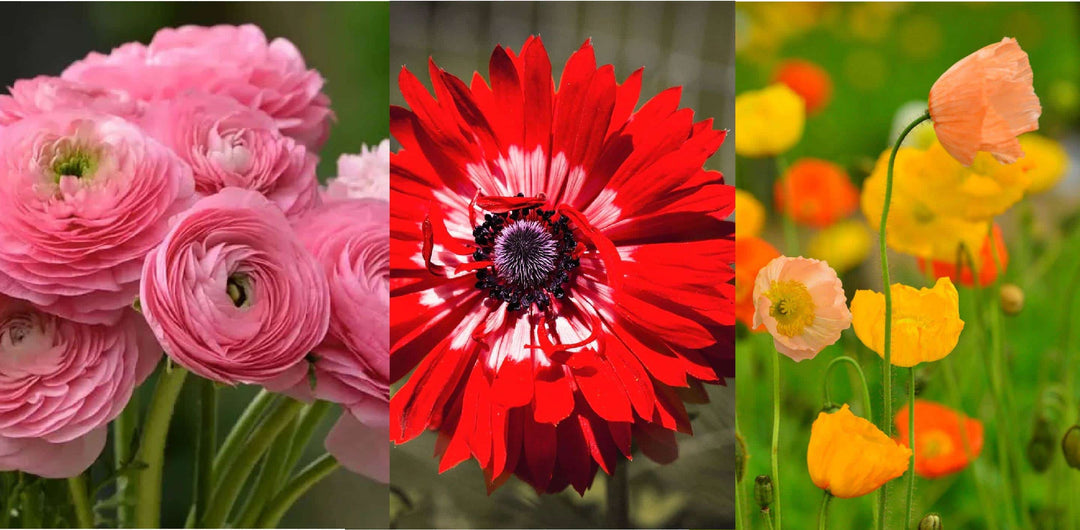How to Grow Cauliflower, A Comprehensive Guide
Cauliflower is a versatile and nutritious vegetable that can be a rewarding addition to any garden. Known for its mild flavor and numerous health benefits, cauliflower is one of the most rewarding vegetables to grow and harvest. In this guide, we will walk you through the essential growing and preparation steps so you can have a successful yield when it comes time to harvest.
Suggested Varieties to Grow
Choosing the right cauliflower variety can make a significant difference in your gardening success. Cauliflower varieties are grouped by growing time, allowing for year-round harvests if you choose different types. The types are as follows:
- Summer Varieties: Fast-growing, sown in winter/early spring, harvested in 4-5 months. Smaller heads, ideal for quicker, easier harvests.
- Mini-Cauliflowers: A compact summer type, maturing in 3 months, perfect for small spaces or containers.
- Autumn Varieties: Sown mid/late spring, they mature in cool fall weather. Harvest before frost.
- Winter Varieties: Slow-growing, maturing in 6+ months, they produce large heads and require wide spacing.
At Wildwood Express, we offer a selection of high-quality cauliflower seeds that cater to different tastes and growing conditions. Whether you’re looking for early-maturing varieties, vibrant colors, or exceptional cold tolerance, we have something for every gardener. Here are three top varieties we recommend:
Snowball is a popular variety known for its smooth, white heads and excellent flavor. It’s ideal for both spring and fall planting and can be harvested in as little as 60 days. Buy Snowball seeds from Wildwood Express.
Tip: This variety is excellent for fresh eating and cooking due to its tender texture and mild taste.
Graffiti is a vibrant purple cauliflower variety that adds a splash of color to your garden and dishes. It has a slightly nutty flavor and can be harvested in about 70 days. Buy Graffiti seeds from Wildwood Express.
Tip: Purple cauliflower is rich in antioxidants and vitamins, making it a nutritious addition to your diet.

Sunset is a unique variety with bright orange heads and a sweet, mild flavor. It’s known for its high beta-carotene content and can be harvested in approximately 65 days. Buy Sunset seeds from Wildwood Express.
Tip: This variety is great for roasting and adding color to salads and dishes.
Ideal Growing Conditions for Cauliflower

Optimal Conditions
Cauliflower grows best in cool weather, with optimal temperatures ranging from 60°F to 70°F (15°C to 21°C). It’s important to follow your cauliflowers recommended plant timing so it can avoid the heat of mid-summer, which can cause the plants to bolt or develop loose heads.
Tip: In regions with hot summers, consider using shade cloth to protect the plants from excessive heat.
Frost Tolerance and Heat Zones
Cauliflower is relatively frost-tolerant and can withstand light frosts, making it suitable for early spring and late fall planting. However, prolonged exposure to temperatures below 25°F (-4°C) can damage the plants. In warmer regions, consider planting more heat-tolerant varieties or consider growing summer varieties that are fast growing so you can harvest before the hot, dry temperatures.
Tip: Use row covers to protect young plants from unexpected frosts and to extend the growing season.
Soil Preparation and Planting

Soil Requirements
Cauliflower thrives in rich, well-drained soil with a pH between 6.0 and 7.0. Before planting, it’s crucial to prepare the soil by incorporating organic matter such as compost or well-rotted manure. This not only improves soil structure but also provides essential nutrients for the growing plants.
Tip: Conduct a soil test to determine the pH and nutrient levels of your soil. Adjust the pH, if necessary, by adding lime to raise it or sulfur to lower it.
Planting Depth and Spacing
Cauliflower seeds should be sown about 1/2 inch deep. If you’re starting seeds indoors, plant them in seed trays or pots about 4-6 weeks before the last expected frost. Once the seedlings have developed two to three true leaves, they can be transplanted outdoors. Indoor grown plants will need to be hardened off so they acclimatize to the outdoor conditions. Space the plants 18-24 inches apart in rows that are 30 inches apart. Larger cauliflower varieties should be given slightly more space at 28 inches and mini cauliflower varieties less at 6 inches. Proper spacing ensures that each plant has enough room to grow and reduces the risk of disease.
Tip: When transplanting, bury the seedlings up to their first set of true leaves to encourage strong root development.
Watering and Fertilization

Watering Tips
Cauliflower requires consistent moisture to develop properly. Water the plants deeply at least once a week, ensuring the soil remains evenly moist but not waterlogged. Mulching around the plants can help retain soil moisture and reduce the frequency of watering.
Tip: Use a soaker hose or drip irrigation system to water the plants at the base, which helps prevent fungal diseases that can occur from wet foliage.
Fertilization Requirements
Cauliflower is a heavy feeder and benefits from regular fertilization. Once the plants are established, side-dress them with a nitrogen-rich fertilizer. We recommend using Nurseryland's Vegetable, Flower, & Garden 12-16-12 Fertilizer. Using the right fertilizer will promote healthy growth and robust heads.
Tip: Avoid over-fertilizing with nitrogen late in the growing season, as this can lead to loose heads and increased susceptibility to pests.
Harvesting

Harvest Timing
Cauliflower is ready to harvest when the heads are firm and have reached the desired size. This typically occurs 60-100 days after planting, depending on the variety. To check for readiness, gently squeeze the head; it should feel solid and dense. If the head is starting to separate, it's past its peak quality and will likely taste bitter.
Harvest Techniques
To harvest cauliflower, use a sharp knife to cut the head off with a couple leaves on the bottom of the curd. After harvesting, store the cauliflower in your refrigerator crisper. Freshly harvested cauliflower can be stored in the refrigerator for up to two weeks.
Tip: If you have a surplus of cauliflower, consider blanching and freezing it for long-term storage.
In Conclusion,
Growing cauliflower can be a rewarding and enjoyable experience, whether you’re a novice gardener or have years of experience.
Remember to choose the right varieties for your climate and preferences, and don’t hesitate to experiment with different types to find what works best for you. With proper care and attention, your cauliflower plants will thrive, offering you a bountiful harvest that you can use in a variety of culinary dishes. Use them in salads, hearty soups, or even roast your cauliflower for a side dish, the possibilities are endless.
At Wildwood Express, we’re committed to providing you with high-quality seeds and gardening supplies to help you succeed in your gardening endeavors. Be sure to explore our website for more gardening tips, tools, and Cauliflower seeds that can support your journey. Happy gardening, and enjoy the fruits (or in this case, vegetables) of your labor!
Ready to start growing? Follow our checklist! .
Cauliflower Growing Checklist
1. Select the Right Variety
- Choose the right cauliflower variety based on your climate and growing season. Some varieties are better for spring, while others thrive in fall. Varieties to consider 'Snowball', 'Sunset', or 'Graffiti'.
2. Timing
- Cauliflower grows best in cool weather, so plan your planting times carefully.
- Follow the specific growing times recommended for your variety on the seed packet
3. Prepare Seed Trays or Pots
- Fill seed trays or small pots with a well-draining seed starting mix
- Moisten the soil before sowing the seeds.
4. Sow the Seeds
- Sow seeds about 1/4 inch deep and lightly cover with soil.
- Space seeds about 2 inches apart if you're using trays.
5. Provide Ideal Growing Conditions
- Temperature: Keep the soil at around 65-70°F (18-21°C) for optimal germination.
- Light: Place trays in a sunny location or under grow lights for 6-8 hours of sunlight daily.
- Moisture: Keep the soil consistently moist but not waterlogged.
6. Outdoor Soil Preparation
- Cauliflower prefers rich, well-drained soil with a pH between 6.0 and 7.0.
- Add compost or organic matter to enrich the soil.
7. Transplanting Seedlings
- Harden off the seedlings when they are 4-6 inches tall by gradually exposing them to outdoor conditions for about a week.
- Spacing: Space plants about 18-24 inches apart in rows that are 24-30 inches apart.
8. Plant Care
- Water regularly, ensuring the soil remains moist but not soggy. Cauliflower needs consistent moisture to prevent stunted growth.
- Mulch around the plants to retain moisture and regulate soil temperature.
- Fertilize with a nitrogen-rich fertilizer after a few weeks of growth.
9. Blanching the Cauliflower (Optional for White Varieties)
- When the heads are about 2-3 inches in diameter, blanch (cover) the heads by tying the outer leaves over the heads to protect them from the sun. This keeps the heads white and tender.
10. Harvesting
- Cauliflower is ready to harvest when the heads are firm and compact, usually about 6-8 inches in diameter.
- Cut the heads off with a sharp knife, leaving some of the outer leaves intact to protect the heads during storage.
11. Post-Harvest Care
- Store cauliflower heads in a cool, dry place, or refrigerate them for up to 2 weeks.












